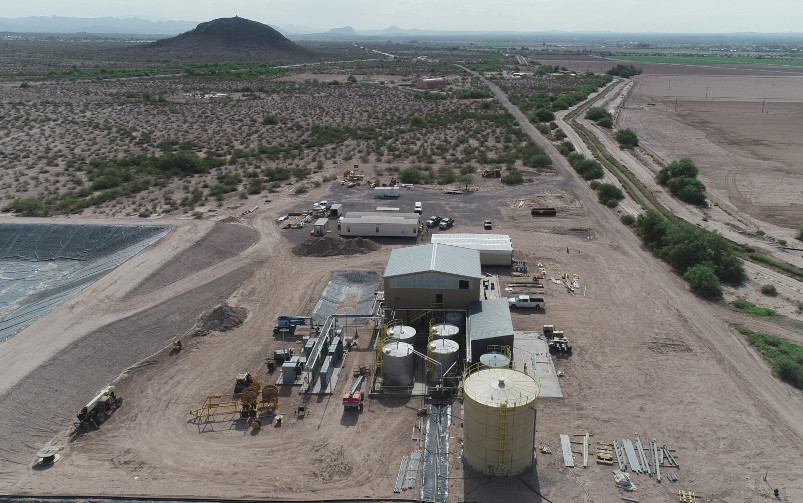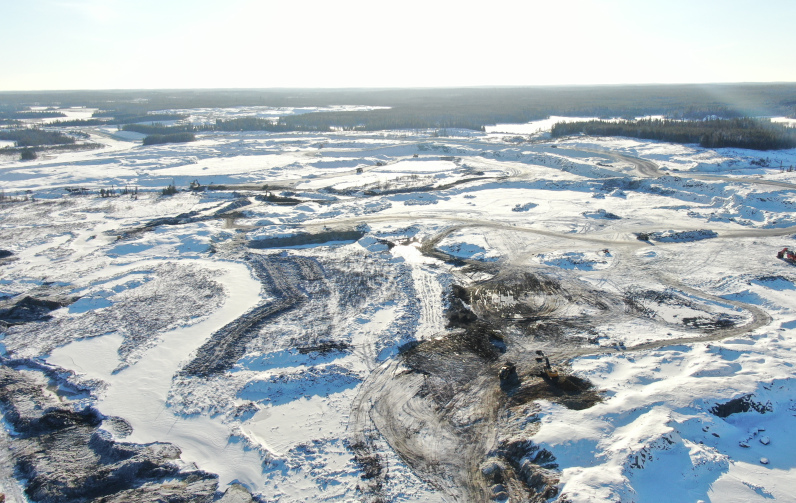According to a 2020 feasibility study, the Kudz Ze Kayah mine would have an annual plant throughput of two million tonnes. Courtesy of BMC Minerals.
Welcome back to your weekly mining news recap, where we catch you up on some of the news you may have missed. This week’s headlines include Canada’s investment in the Jansen potash mine, some operations resuming at Glencore’s Raglan mine despite strike action and a new international critical minerals partnership.
Kinross Gold sold all of its Russian assets to the Highland Gold Mining group of companies for US$340 million, a price set by Russia’s new sub-commission on the Control of Foreign Investments, which is only half of the amount previously agreed to by the two parties, as reported by the Financial Post. Despite the deep discount, market analysts noted it was a positive outcome as it ends Kinross’s obligations and liabilities in the country.
The government of Canada will be investing up to $100 million in emission reduction efforts at BHP’s Jansen potash mine in Saskatchewan, to help make the mine the greenest of its kind in the world. The Strategic Innovation Fund grant is expected to assist the mine produce 50 per cent less carbon dioxide and use 60 per cent less water per tonne of product than the average potash mine. The full investment in green measures for the mine are projected at $400 million out of the mine’s $7.6 billion cost.
After a long and controversial environmental assessment phase, the governments of Yukon and Canada have given BMC Minerals’ Kudz Ze Kayah mining project in southeast Yukon the green light, as reported by CBC. According to a 2020 feasibility study, the mine would begin as an open-pit operation and then transition to underground mining, and have an annual plant throughput of two million tonnes. While First Nations stakeholders and conservationists believe the project will have environmental impacts too severe to be completely mitigated, such as disturbing aquatic habitats and a caribou herd’s migration, the governments have deemed adequate mitigation could be implemented. The project is now moving into the regulatory phase.
The United States, Canada and a host of other countries have established the Minerals Security Partnership aimed at securing critical minerals supply through public and private strategic investments that adhere to high ESG standards, as reported by Reuters. The partnership is among global efforts to secure materials for decarbonization efforts while countering dominance in the sector by China. Other countries in the partnership include Australia, Finland, France, Germany, Japan, South Korea, Sweden, the United Kingdom and the European Commission.
The wait is finally over: Natural Resources Canada has announced that the Canadian Mining Innovation Council (CMIC) is the winner of the $5 million grand prize for the Crush It! Challenge. The CMIC team, with Dr. Erin Bobicki as its technical lead, developed its CanMicro solution by combining microwave-assisted comminution and multi-sensor ore sorting. CanMicro achieved over 35 per cent energy savings across different commodities, going above guidelines for the challenge, which sought to devise cleantech solutions for saving energy in crushing and grinding.
Exploration has been booming in Atlantic Canada, with mining companies heading east to look for gold and critical minerals. With the Appalachian Mountain range and part of the Canadian Shield running through the Atlantic provinces, many are identifying great geological potential, sparking new interest. In the first quarter of 2022, 145,548 hectares of new claims were recorded, making this year well on its way to break the record-setting numbers of 2020.
Federal Minister of Natural Resources Jonathan Wilkinson took the stage at the Prospectors and Developers Association of Canada Conference (PDAC) this week, speaking about the state of Canada’s mining industry. Among other topics he touched on, such as the industry’s transformation and its international recognition, Wilkinson noted that the federal government is working on reducing roadblocks on mining development, acknowledging the industry’s crucial role in global decarbonization efforts.
In further PDAC highlights, a keynote address by CRU Group’s Vanessa Davidson tackled the copper question, contrasting rising demand and prices with increases in development time due to ESG factors and complex product characteristics. Davidson tempered copper enthusiasm with observations about what could derail future investments, such as high inflation, long-term pandemic effects, global supply and demand shifts and a potentially slower green technology uptake than currently projected.
As the focus of the industry turns to critical minerals, some are left wondering what the role of gold will become in the industry. Newmont CEO Tom Palmer, another PDAC keynote speaker, noted that four key differentiators will define the future of gold producers: commitment to ESG practices, asset portfolios as defined by scale and mine life, experience of company leadership and the ability to generate a strong free cash flow. According to Palmer, “those who do not understand these fundamentals are due to be left behind.”
The Renewable Carbon Index (RCI), so far mostly used in cleaning and consumer goods, could find application in the mining industry when it comes to quantifiable ESG metrics, according to Laura Benevides, director of sustainability at Integrity BioChem and vice-president of technology at Integrity Mining and Industrial. The RCI differentiates between bio-based and petroleum-based carbon molecules, rewarding the presence of the former in a product. By making the switch away from synthetic reagents to bio-based reagents in the mining process, companies could make significant improvements on decarbonization with the help of the RCI.
That’s all for this week. If you’ve got feedback, you can always reach us at editor@cim.org. If you’ve got something to add, why not join the conversation on our Facebook, Twitter, LinkedIn or Instagram pages?




